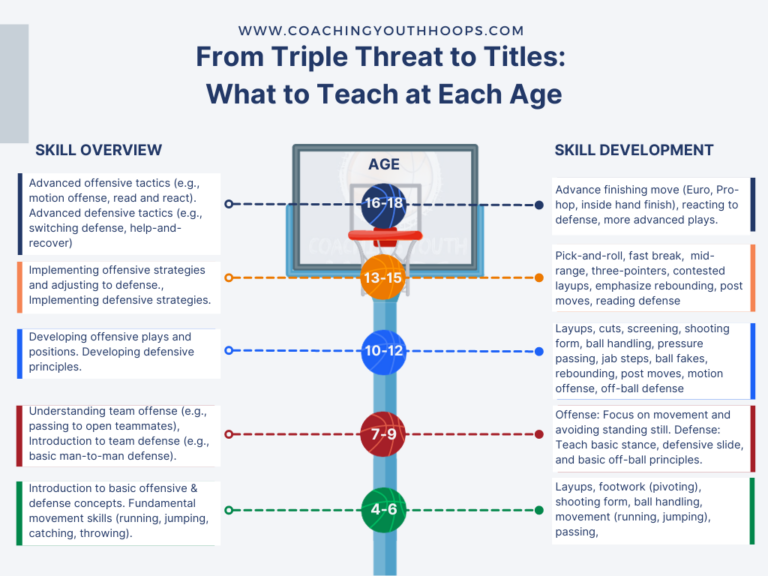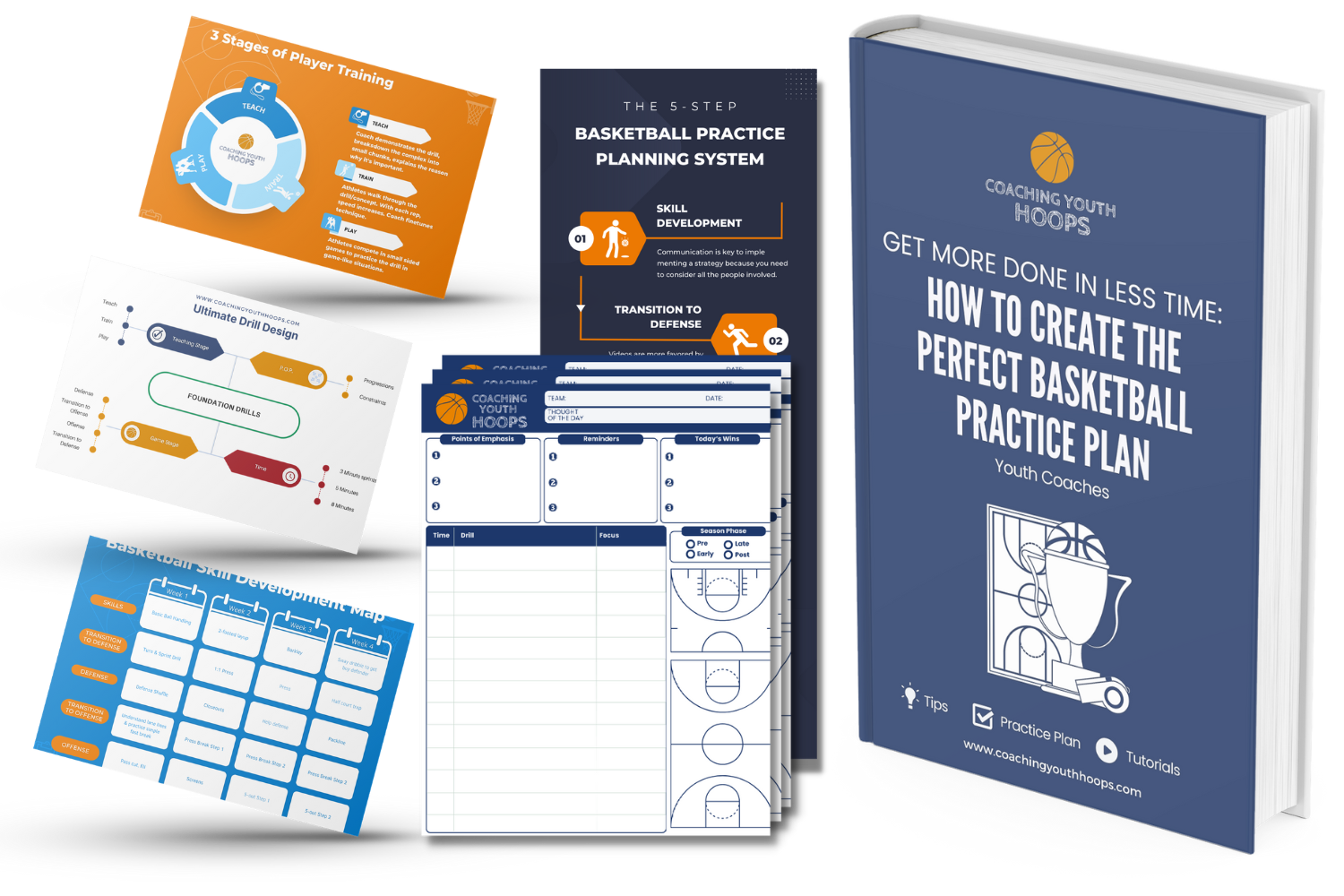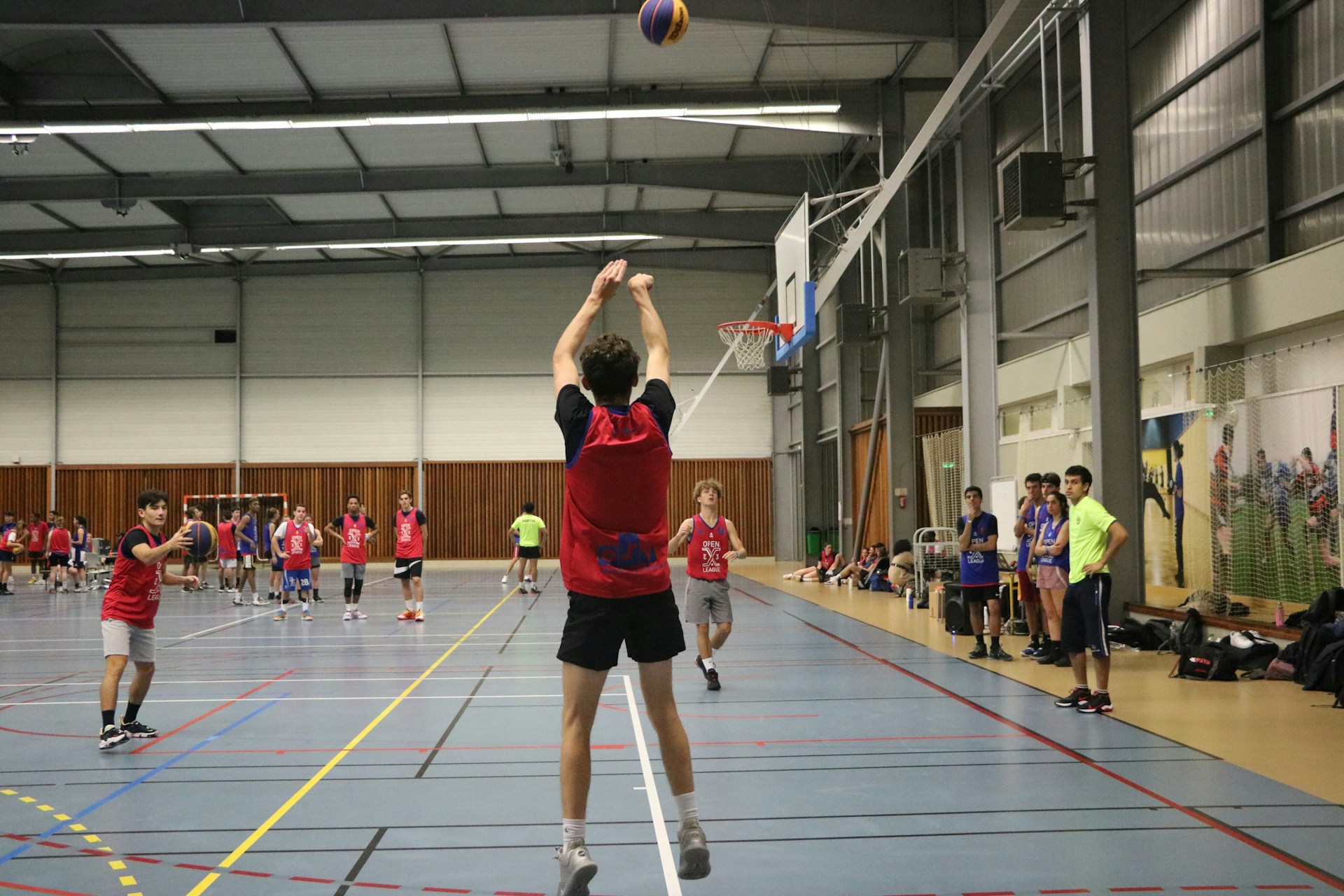Discussion Points
- Introduction
- Managing Expectations with a Youth Basketball Team
- 5 Key Steps for Youth Basketball First Practice
- Conclusion
- FAQs
5 Key Steps for Your Youth Basketball First Practice
Introduction
As a veteran youth basketball coach, I know how crucial the first practice is in setting the tone for the entire season. This initial session is not just about drills and skills. It’s about establishing a culture of communication, setting clear expectations, and building a cohesive team environment. Whether you’re coaching a recreational league, an AAU team, or a competitive club, your approach to the youth basketball first practice can make all the difference in the world.
In this post, I’ll share strategies and tips on how to run an effective first practice, focusing on managing expectations, creating a positive team atmosphere, and laying the groundwork for both individual and team development. By the end of this guide, you’ll have a blueprint to ensure your season starts on the right foot.
Managing Expectations with a Youth Basketball Team
Managing expectations is a cornerstone of effective coaching, especially when dealing with young athletes and their parents. From the outset, it’s important to establish a clear and open line of communication. Here’s how you can do that effectively:
Initial Team Meeting:
Before your youth basketball first practice, start with a comprehensive team meeting that includes both players and their parents. This meeting is your opportunity to set the tone for the season and establish a mutual understanding. Begin by introducing yourself, your coaching philosophy, and your goals for the season. Be transparent about your expectations regarding practice attendance, effort, and behavior. Explain that you expect 100% effort in practice and that this will directly influence playing time during games.
Discuss Goals:
Ask both players and parents what they hope to achieve this season. Are they focused on skill development, enjoying the game, or competing at a high level? Understanding these goals will help you tailor your coaching approach. Emphasize that while winning is important, the primary focus is on development and having fun. Make it clear that every player has a role, and effort and attitude are key factors in determining playing time.
Parental Involvement:
Encourage parents to support their children by reinforcing the values of hard work, discipline, and teamwork at home. Let them know that their positive reinforcement and encouragement are crucial. Also, make it clear that while their input is valued, decisions regarding playing time, practice routines, and game strategies will be made based on what’s best for the team as a whole.
Setting Consequences:
Outline the consequences for not meeting expectations. Explain that if a player is not giving their best effort or is negatively impacting team morale, they will face reduced playing time. Be consistent with these consequences to maintain fairness and credibility. Set this before your youth basketball first practice to ensure a smooth season.
What to Teach at Each Age
Unlock the secret to crafting drills and practice plans that perfectly match your team’s cognitive and motor skill growth at every age level.

5 Key Steps for Youth Basketball First Practice
Your youth basketball first practice is a chance to assess your team’s current skill level, introduce fundamental concepts, and begin building a cohesive unit. Here’s a detailed breakdown of how to structure this session:
Team Discussion:
- Welcome and Introductions: Begin with a warm welcome and brief introductions. This helps to create a comfortable and inclusive environment.
- Discuss Goals: Ask players and parents about their goals for the season. Write down these goals and refer back to them throughout the season.
- Outline Expectations: Clearly communicate your expectations for effort, attendance, and attitude. Explain the importance of consistent effort and positive behavior.
- Encourage Questions: Allow time for questions and provide clear, thoughtful answers. This ensures everyone is on the same page.
Basic Drills:
- Warm-Up: Start your youth basketball first practice with a light warm-up to get the players loose and ready. Include stretching, jogging, and simple ball-handling drills.
- Fundamental Skills: Conduct basic drills to assess each player’s skill level. This can include dribbling drills, passing exercises, and shooting practice. Observe how players execute these drills and note areas for improvement.
- Team Building: Incorporate fun, team-building drills that promote camaraderie and communication. Examples include relay races or passing games that require teamwork.
Introduction to Plays:
- Offensive Basics: Introduce the basic movements of your primary offensive strategy. For example, if you run a triangle offense, demonstrate the fundamental positions and movements.
- Defensive Basics: Similarly, outline your defensive strategy. Show players their responsibilities in man-to-man or zone defense.
- Simple Drills: Use simple, easy-to-understand drills to reinforce these concepts. Gradually build complexity as players become more comfortable with the basics.
Player Homework:
- Skill Development: Ask each player to identify three skills they want to improve this season. This could include shooting accuracy, dribbling, passing, or defensive techniques.
- Personal Goals: Have players set three personal goals, such as achieving a specific number of rebounds in a game or improving their free-throw percentage.
- Follow-Up: Plan to review these goals periodically and provide feedback on their progress after that youth basketball first practice.
Parent Involvement:
- Goals for Their Children: Encourage parents to share their goals and any concerns they have for their children. This can include personal development aspects like confidence or teamwork skills.
- Open Communication: Maintain an open line of communication with parents. Encourage them to reach out with any concerns or observations throughout the season.
Conclusion
Your youth basketball first practice is a pivotal moment for any team. By setting clear expectations, involving parents, and focusing on both individual and team development, you create a strong foundation for the season ahead. Remember that effective communication and consistent enforcement of expectations are key to maintaining a positive and productive team environment.
As a coach, your role extends beyond teaching basketball skills. You’re shaping young athletes’ attitudes towards teamwork, effort, and sportsmanship. By following the strategies and steps outlined in this post, you’ll be well-prepared to lead your team to a successful and enjoyable season. Best of luck with your youth basketball first practice, and here’s to a fantastic season ahead!
Boost Skill Development, Eliminate Stress and Run Better Practices

FAQs
Q: How long should the first practice be?
A: Aim for a practice session of 1 to 2 hours. This allows enough time for a team meeting, basic drills, and an introduction to your offensive and defensive plays.
Q: What should I do if a player isn’t meeting expectations in practice?
A: Address the issue privately with the player, explaining how their behavior affects the team. Set clear consequences and provide opportunities for the player to improve. Reinforce positive behaviors and provide constructive feedback to help them get back on track.
Q: How can I keep parents involved without them becoming too intrusive?
A: Encourage open communication and regular updates. Set boundaries by explaining your coaching methods and decision-making processes during the initial team meeting. Remind parents that their support and encouragement are essential but that coaching decisions are made with the team’s best interests in mind.
Q: What if some players are more focused on having fun while others are more competitive?
A: Balance your approach by incorporating fun, engaging drills that also promote skill development. Recognize and reward both effort and improvement to keep all players motivated. Create a team culture where both fun and competitiveness are valued and respected.
Q: How do I handle a situation where a parent disagrees with my coaching decisions?
A: Listen to their concerns respectfully, explain your reasoning, and refer back to the expectations set during the initial team meeting. Consistency and transparency are key to maintaining trust and respect. Offer to discuss the matter further in a private meeting if needed, and always aim to find a resolution that supports the player’s development and the team’s goals.



